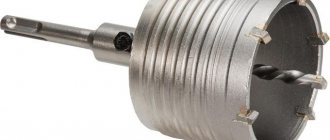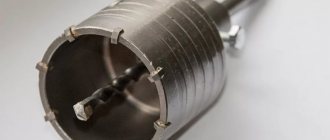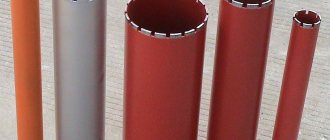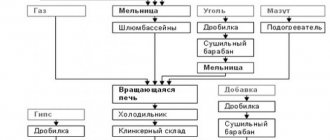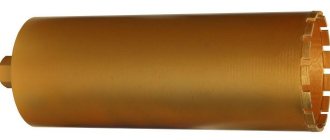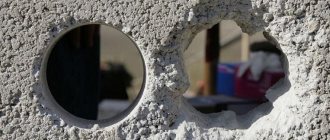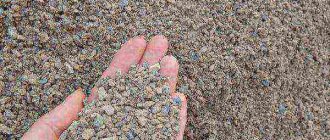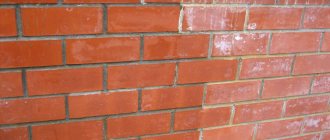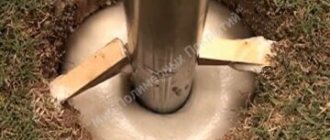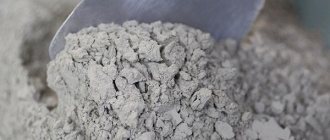Diamond bits for concrete are special attachments for drilling rigs or hammer drills, which are used for drilling grooves or holes in a variety of materials: concrete, asphalt, granite, and other hard coatings. Work can be performed at all stages of construction, repair and operation of facilities.
Diamond core bits for drilling concrete may differ in diameter, power, ability to install additional accessories (shanks, extensions, etc.), functions, working conditions and other criteria. There are universal elements, and there are those that are designed for specific tasks. Drilling concrete is important at different stages of repair and construction work when installing communications and wiring in walls, floors, ceilings; it may be needed for laying pipes and other elements.
Purpose
A diamond bit for concrete allows you to quickly and efficiently perform work that, without drilling with a hammer drill or using other processing methods, can take a lot of time and effort. Thanks to crowns, drilling of monolithic walls is carried out as efficiently as possible, taking into account the requirements and calculations.
Scope of application of diamond bits for concrete:
- Installation of a recess for a switch, socket, socket box
- Creating fasteners for a stair system
- Holes of different diameters and depths during the implementation of facade work
- Installation of boxes and various hanging structures
- Laying various communications through slabs - plumbing, electrical wiring, heating risers, ventilation and exhaust systems
Selecting Tool Sizes
To figure out the size of the product, you need to start from the diameter of the desired hole. A diamond bit for drilling concrete is sold separately or in a set, which already includes all the required sizes. All necessary data is in the passport or indicated on the label.
Standard circumference is 68 mm. Most sockets are manufactured specifically for these parameters. Less common are 70 and 75 mm. However, the diameter comes in: 8, 10, 12, 20, 24 and 32 mm.
It happens that the socket is already on hand, but what hole to make is unclear. Take a caliper and measure the outer circumference of the rosette. The resulting number will be the diameter. The depth available to it depends on the length of the crown. The more cutting teeth (5, 6, 8), the easier the drilling process.
Device Features
A diamond-coated concrete crown is a small piece of pipe made of durable tool steel, which can be made in different diameters and lengths. At one end of the cut there are strong and reliable cutting elements, while at the other there is a shank, thanks to which the cylinder is securely fastened in the tool chuck.
A diamond bit for concrete can be used with a hammer drill, impact and conventional drill, and other types of tools. The crown can be prefabricated/solid. In the center of the cut pipe there is a centering replacement drill (usually made with a carbide tip). Inside the cylinder there may be various sinuses that serve to collect waste from the working area.
Wet and dry cutting
A diamond bit for concrete can involve two types of drilling – wet and dry. In a wet cut, water is supplied during operation, which washes away the sludge and cools the product. This option is relevant where it is possible to ensure a continuous supply of water. Otherwise, it is better to choose drills for dry cutting or with a portable water container.
Wet cut
involves a constant supply of water during drilling, which has a positive effect on the tool, as it cools it and protects it from overheating. High-quality crowns for wet cutting are produced by Japanese manufacturers, and products from Russian and Austrian brands have also proven themselves well on the market.
Dry cut
requires attention to the placement of the support post, since even a slight displacement can cause the crowns to fail. In order for the tool to serve for a long time, it must be lubricated regularly. The highest quality crowns for dry cutting are supplied by American and German manufacturers.
Advantages of the crown device
Diamond bits for a concrete hammer drill have certain advantages, which are determined by the correct choice of element for a particular job, correct operation, and the quality of the product itself.
The main advantages of diamond drill bits for concrete:
- Durability - if you use it correctly and do not overheat the device, the crown will last for several years or more
- High performance – throughout the entire period of use
- Endurance - despite the fact that for a certain type of work a diamond bit for reinforced concrete is more relevant, even universal products perform well when working with reinforcement, although their service life is reduced
- Versatility – the ability to use crowns on electric, hand-held, home or professional tools from any manufacturer
- Different materials - diamond bits are often used to work with both concrete monolith and stone, expanded clay concrete, foam concrete, etc.
- Drilling holes of increased depth
- Excellent quality of work - thanks to drill bits, you can avoid cracks and chips, guaranteeing a neat and even hole (with a minimum of collateral vibration and noise, which is important)
- Small amount of dust during operation
- Absence of shock and vibration loads, therefore finishing of the structure can be carried out safely and effectively even in emergency conditions
Features of choosing diamond cylinders for concrete
Modern manufacturers offer diamond crowns in a wide variety. According to the principle of operation and design, they are all approximately the same - a small cylinder in the form of a pipe, at one end of which there is a cutting element, at the other - an attachment to a tool that works as a drive.
Typically, choosing a crown involves determining the type of shank and type of tool. Thus, manufacturers equip diamond drill bits with a cylindrical SDS shank. But it is worth considering that for a drill the device is made with a cylindrical or multifaceted shank. The cylinder for recesses for sockets can be equipped with either type of shank.
There are bits with universal shanks that can be used in a wide variety of tools. But manufacturers of electrical equipment and tools used in repair and construction work advise choosing crowns from the same companies as the tool itself. Logically, they must correspond exactly to each other and ensure the highest quality of work.
Criteria for choosing a diamond crown:
- Concrete hardness, presence of reinforcement.
- Wet or dry drilling.
- Diameter of holes (depends on the task at hand - thickness of the cable being laid, socket box, pipe cross-section, etc.). So, for drilling for a socket, it is better to choose a crown that is 2-3 millimeters larger so that the product is firmly attached to the gypsum mortar. Before purchasing a crown, you need to know exactly the diameter of the element for which the hole is being made.
- The type of tool, compatibility with a particular consumable, the power of the hammer drill - so, if a tool with a power of 1 kW is used in the work, it is not recommended to drill a hole larger than 25 centimeters. For more powerful hammer drills, nozzles of any diameter are suitable.
- Fixation of the teeth of the crowns on the shaft - the deeper the cutting teeth sit in the tube, the longer the service life of the crown will be.
- The design of the nozzle shank can be solid, with a different number of open/closed grooves (various modifications of the SDS fastening system, which are marked as top, plus, quick, max), for mounting in a cam-type drill chuck.
Principles for selecting crown size
A correctly selected drill cylinder diameter will ensure the most efficient and high-quality work.
To correctly select the size of a diamond crown, the following factors must be taken into account:
- The hardness of concrete (meaning the presence of reinforcement).
- Drilling option (wet or dry cut).
- Diameter of holes (depending on the goals set - size of pipes, socket box, cable thickness). When choosing a core drill for drilling a hole for a socket, it is important to purchase a cylinder whose diameter would be two to three millimeters larger. This will ensure that the socket box is secured as tightly as possible in the hole using gypsum mortar.
A concrete crown can be a prefabricated or monolithic structure.
When selecting a device of the required size, special attention must be paid to its type and compatibility with the tools available, as well as its power. If you have a tool with a power of one kW, it will be important to purchase a drill cylinder whose diameter does not exceed twenty-five centimeters.
Recommendations for use
In the process of performing any work using a diamond bit for concrete, you must follow the rules of electrical safety, safety precautions, and do not forget about special clothing and personal protective equipment, which will avoid injuries and various troubles.
Before you start making holes in the walls for dismantling work or implementing any other tasks, you need to make sure that the tool is in working order and the crown is attached correctly and securely. Before drilling begins, the area is marked and holes in the required quantity are made according to the marks. Periodically, you need to allow the cylinder to cool down so that it does not overheat, which significantly reduces its service life.
You should not skimp on the quality of crowns, as this will greatly affect the quality of the work performed. As a result, saving and using low-quality bits or ones not recommended by the tool manufacturer can lead to damage to the material being drilled, the bit itself, the perforator, and also cause injuries.
How and with what to drill porcelain tiles
Porcelain tiles have good consumer qualities, which is why they are constantly used in the decoration of modern apartments and houses. It is not surprising that the need to process such cladding arises quite often. For this, different technologies and devices are used. We'll tell you how to drill porcelain tiles on the floor or wall.
Everything about drilling porcelain tiles
Which drill to choose
The material has a high level of strength; to work with it you will need a special tool that can be used by a non-professional. Let's look at how to drill porcelain tiles at home.
Pobedite drill
The most economical option is a drill with a Pobedit tip. Its cutting part is made of a special hard alloy, which copes well with tiles, bricks and concrete. However, the product is still not intended for porcelain tiles, so after drilling two or three holes it will have to be thrown away.
Diamond Coated Tool
Sometimes it is necessary to make a large number of recesses in the wall - not 2-3, but 5-10 or more. In this case, it is easier to purchase a gimlet with a coating applied by sintering. This technology is distinguished by the fact that diamond chips are attached to the base using hard solder, consisting of an alloy containing manganese or chromium. The frozen bond firmly holds the crystal fragments on the cutting element, thereby significantly increasing its service life. Similar drills for porcelain stoneware can be used for both dry and wet drilling.
Instagram @svptool
A tool made using this method is highly reliable, but it is also not cheap.
Diamond crowns
If you don’t need to drill a lot, it is advisable to use diamond core bits and drills with a coating applied by galvanic fastening. The essence of the method is that a layer of nickel compounds is deposited on the cutting edge as a result of an electrochemical process, into which diamond crystals are immersed.
Instagram @rzn_plitochnik
Steel feathers
Another budget-friendly tool for working with porcelain stoneware is feather (spear-shaped) tile drills. They are used if the diameter of the recess does not exceed 12 mm. The instrument is equipped with a tip in the form of a cut feather (spear), sharpened at an acute angle on only one side. With its help, you can prepare a place for a dowel, but this will require considerable effort: the drill moves very slowly, and with strong pressure it risks breaking. However, it makes it possible to save on expensive professional equipment.
Ballerina
Often it is necessary to make several holes of different diameters in an already tiled wall. For example, for laying plumbing or ventilation pipes. In this situation, a special circular drill, which builders call a “ballerina”, comes in handy. The design of the device resembles a compass: a working part with a cutting edge is fixed to the axial element by means of a long lever. The lever allows you to set a certain radius. The sharpening can be made of pobedite or have diamond (corundum) coating. However, despite this, the tip quickly becomes unusable.
Instagram @plitochnik_vologda
Before work, buy a protective plastic grille (if it is not included in the kit): the limiter will not allow construction dust to scatter to the sides.
We looked at how to drill porcelain stoneware at home. Summarize. If you have a limited budget, it is better to use a spear-shaped gimlet or a drill (crown) with a working element made of pobedite. If you need to get the job done as quickly as possible, it is advisable to purchase several tools with electroplated diamond coating. In order to drill a large number of recesses, you will have to spend money on a product with diamond chips, which were fixed by sintering - the most expensive option. Slots of different diameters can be made with a special device for circular drilling - a ballerina. This will be much cheaper than if you bought a separate diamond bit for each size.
How to drill a hole in porcelain tiles
It should be understood that porcelain tiles cannot be treated outdoors. That is, the method in which the workpiece is fixed on the workbench in such a way that its processed part hangs above the floor is unacceptable. Otherwise, the material will split into pieces during the drilling process.
Instagram @grestool
When using a hammer drill, you need to turn off the impact mode in a timely manner, otherwise the finish will be hopelessly damaged.
When starting processing, hold the tool strictly perpendicular to the cladding.
Drilling instructions
When using drills with a pobedit tip, you must set the rotation speed of the drill or screwdriver to 500 rpm. If we are talking about working with a diamond drill, then the optimal speed for it is 1500 rpm. In both cases, to prevent the tool from sliding on the surface of the tile, it is better to seal the treatment area with masking tape.
Before drilling on the wall, carefully tap it: if the sound indicates the presence of voids, you will have to abandon the work, since such a finish will not withstand processing. It is also undesirable to touch the seams - this can lead to the appearance of cracks. As a last resort, the hole should be made strictly in the middle of the joint.
As soon as the drill goes through the tile and reaches the concrete, change the drill to one that is designed specifically for this material. Unless, of course, there remains a need to go deeper. The last two recommendations also apply to tiles laid as a finishing coating on the floor.
When working on a workbench (or table), the porcelain stoneware should be firmly fixed and ensure that there is a solid backing (plywood or drywall) under its entire area.
The video shows the drilling process.
Tips for core drilling
Forming holes using diamond cylinders is not much different from similar operations with drills. And yet there are some peculiarities.
Instagram @grestool
It’s good if the model has a centering drill - it will help hold the drill in place. If this is not available, it is better to make a special template: cut a hole of the required size in a plywood or plasterboard sheet.
Instagram @rzn_plitochnik
Watch a video on how to properly drill tiles with a crown.
Working with a ballerina
The first step is to fix the cutter of the device at the distance from the axial stand that will correspond to the required radius of the hole. The distance can vary from 15 to 45 mm. Before starting drilling, it is recommended to make a small depression in the center of the circle being cut out. It will help to correctly install the ballerina and avoid its displacement in the future.
In places where processing is intended, the surface of the material should be lubricated with machine oil (excluding the hole in the center).
Having secured the device in the drill chuck, you can start drilling at low speeds. It is very important not to apply too much force. Excessive load on the cutter may damage the tiles or cause the tool to break. In addition, you need to hold the drill firmly in your hands, avoiding distortions, otherwise the process will proceed unevenly: some part of the intended circle will be cut out, and some will not. To prevent the working elements of the ballerina from overheating, drilling must be carried out with periodic stops.
Instagram @plitochnik_vologda
How to cool the instrument
It is very important not to forget about cooling. For the winner, this rule has no exceptions. But some diamond-coated models already contain cavities with olive oil, so such gimlets can be used without additional wetting. Crowns with a cutting layer made using sintering technology are also often used without wetting. But we must keep in mind that this leads to a sharp reduction in their service life.
Cooling of the cutting element can be ensured in different ways. The most popular way is to water it from a nearby bottle of oil or water. But at the same time, one hand will be constantly occupied, which is very inconvenient.
An interesting option is to make a hanging dropper with a hose from plastic dishes, extending it to the drilling site.
Instagram @fix_tool
There is a more economical method, but it is only suitable for tiles laid on the floor: cut a hole in the cap of a plastic bottle, and then, using plasticine, glue it to the porcelain stoneware and fill it with water. Being inside this container, the drill will no longer overheat.
Drilling efficiency
According to tool manufacturers and craftsmen, maximum work efficiency can be achieved using high-quality crowns and powerful tools made with a pneumatic or electric drive.
Basic conditions for work efficiency:
- Using a diamond bit for concrete to make holes for tasks such as laying various communications in reinforced concrete walls (plumbing, heating pipes, connecting units, electrical wiring, risers, ventilation, hoods, attachments, air conditioners, facade work).
- Diamond crowns must be used for their intended purpose, with precise selection of the required parameters.
- The cylinders must correspond to the tool in diameter, power, and be attached accurately and reliably. The size of the instrument and its correspondence to the crown also play a role. The marking usually includes all the necessary data (drill, hammer drill, M16 and other values).
- The master has certain skills and knowledge - at least minimal, in order to work correctly and in compliance with all standards and requirements. Small and medium-sized tubes can be used for DIY work; in other cases, it is better to leave the work to a master.
Principles of working with a diamond cylinder for drilling concrete
To perform the assigned tasks with the highest quality, you must be able to work with tools and a diamond bit for concrete. There is nothing complicated in the work, but there are certain principles that must be adhered to.
Rules for working with diamond bits for concrete:
- Do not press too hard - this may impair the performance of the cylinder and reduce its service life, leading to breakdown.
- When working with reinforced concrete, it is better to use a dry cut and be sure to check the reliability and strength of the fixation. If the fixation is unreliable, the cylinder may become deformed and become damaged beyond repair.
- If diamond segments and edges are fixed with solder, then a water supply must be used during the work. If there is no cooling, the solder can noticeably weaken and even become deformed.
- The size of the installation must be correctly selected, match the assigned tasks, and guarantee the required level of efficiency and quality.
Conclusion
The use of diamond core drills ensures maximum efficiency when working with materials such as reinforced concrete, concrete, brick, stone, as well as softer and porous materials such as foam concrete, gas silicate.
A prerequisite when working with core drills is compliance with safety regulations. When starting to work with concrete and other materials, you must put on a work uniform and personal protective equipment: goggles, gloves and a respirator.
Proper operation of the tool, even if repair work is carried out day after day, will ensure its most efficient implementation and long service life of the device.
Application of carbide bit
Carbide bits for concrete are used where impact drilling with a rotary hammer is required to the level of laying reinforcement. In this case, the cutting edge of the crown is made in the format of several teeth, and the opposite one is equipped with an SDS shank. Carbide bits are usually used where small holes need to be made (most often in everyday life, not in industry).
Due to the fact that the tool has a high impact force, the service life of the cylinder is significantly reduced, and the effect on the concrete structure is not very good. Carbide crowns, unlike diamond ones, cannot be restored.
Diamond hole cutting
- Before starting work, you need to make sure that there is no reinforcement in the concrete monolith that could damage the tool.
- If the mechanism has a centering drill, it is placed in the center of the mark on the drilling surface - now you can drill. If there is no drill, the cutting edge of the cylinder must be applied to the concrete surface with all teeth at the same time.
- Dust is removed using a construction vacuum cleaner equipped with a special hose attachment.
- You can drill continuously to the desired depth, without stopping.
- If you need to make a hole through, the drilled piece of concrete should remain inside the cylinder, then it is removed along with the nozzle. If the holes are not made through, the remaining piece of concrete in the center is removed with a chisel or chisel using the chipping method.
- To speed up drilling, you can deepen the tool a small amount, then take it out and make several holes in the contour of the circle to the required depth with a Pobedit drill with a diameter equal to the width of the cylinder teeth. Then drilling continues with the selected crown.
How and with what to drill porcelain stoneware
Porcelain tiles are a popular material for interior decoration of residential premises. A person living in an apartment or house with such tiles sooner or later needs to drill a hole in it - to hang a mount, bring out a wire, and so on. And then the question arises - how and with what to drill porcelain stoneware so as not to damage it.
Which drill to choose?
Drilling porcelain tiles is not difficult - anyone with a drill or hammer drill can do it (by the way, the latter must be turned off in impact mode before starting work). The main thing is to choose the right drill.
Pobedite drill
This option is the cheapest. Drills with pobedit tips are well suited for working with concrete, brick and tiles. Formally, they are not intended for porcelain stoneware, but you can still drill with them. Tiles from “Italon”, “AltaCera” and other popular brands will not be damaged by such a drill, nor will they become chipped or cracked.
But the drill itself will have problems:
- the strength of the victor is enough for 2-3 holes, after which you will have to take a new drill;
- when drilling small holes (up to 5 mm in diameter), the winner will overheat and break, so you need to buy products with a reserve.
So, it makes sense to use a drill with a pobedit tip when you only need to make a few holes. It will not be suitable for larger-scale work, since a large number of products will be needed, and the main advantage of the drill (saving money) will disappear.
Diamond tool
This drilling method is the most reliable, but also the most expensive. The diamond chips that coat the drilling tools adhere firmly to the alloy of manganese and chromium, making them very durable. Such products are suitable for both dry and wet drilling.
There are 2 types of diamond-coated tools:
- drill;
- crown.
Both options are excellent for drilling porcelain tiles. A drill should be used if you need a small hole (less than 10 mm in diameter), and a crown - when you need a diameter from 10 to 70 mm.
You can save money by purchasing a drill or bit with a coating that was applied by galvanic fastening. These product options are much cheaper, but break down quite quickly. One piece is enough for 5-7 holes.
Circular drill
Circular drills, called “ballerina drills” in construction jargon, are the best choice when you need to make holes of different diameters. Instead of buying a whole set of tools of different calibers, you can buy a “ballerina” with a replaceable cutter. It will work out much cheaper.
Ballerina tips come in pobedite and diamond tips. But even the latter ones break quite quickly. Therefore, a replacement cutter is very important - it eliminates the need to buy a new product entirely.
Steel "feather"
Another budget option is a steel drill with a spear-shaped tip. These products are intended for tiles, but are also quite suitable for solving the question of how and how to cut porcelain tiles without chipping. Steel “feathers” have a diameter of up to 12 mm, so larger holes cannot be made using this method.
The disadvantages of "feathers" are:
- slowly moving deeper into the porcelain stoneware;
- If you press too hard, they may break.
However, for making a few small holes, spear drills are fine. Using them helps you save money.
How to drill porcelain tiles?
The technique for drilling porcelain tiles of the Ural Granite, Atlas Concord and any other brands is always the same:
- the hole should not be closer than 15 mm from the edge of the tile;
- tiles cannot be drilled while suspended (when there is air space underneath) - this will lead to chips and cracks;
- if a through hole is not needed, then you should make a mark on the drill with a pencil or marker in advance in order to stop in time.
The technology for drilling porcelain stoneware does not differ from working with conventional drills. But some types of drilling products have features that affect the process.
Resuscitation and care rules, overheating protection
If a diamond bit for concrete has ceased to perform its functions normally, first of all, it is advisable to find out the causes of the malfunction.
First, the possibility of failure due to wear is established, then the body is inspected for cracks and the consequences of horizontal runout. If everything is in order, you can solder several segments to replace those that are worn out.
To extend the time between repairs and significantly increase service life, craftsmen recommend doing everything in strict accordance with the rules specified in the instructions. The crown is afraid of overheating and cannot be used to work with materials that are not listed in the technical data sheet. It is also important to ensure that the water cooling regime is not disturbed in wet models. Diamond bits for brazing concrete must be of high quality, made in accordance with standards.
Overheating protection is provided by the cooling system. When cutting wet, water flows in the required volume and continuously, cooling the diamonds. To operate the tool, the pressure in a regular water supply is sufficient. The required volume of water is determined based on the diameter of the crown head (all data must be indicated in the instructions). Exceeding the value may make it difficult to advance the tool; if there is little water, the segments are more likely to wear out.
Crown - how to use
11 lifehacks to help keep your kitchen drawers organized (always!)
Budget finds: 10 products from AliExpress that will make a small kitchen more convenient
8 features of kitchen renovation in a panel house
Are you a professional architect or designer?
IVD. Repair and finishing
Are you a professional architect or designer?
The IVD.ru website is a leading Internet project dedicated to the issues of reconstruction and interior design of residential premises. The main content of the site is the archive of the magazine “Ideas for Your Home” - exclusive author’s articles, high-quality illustrations, practical tips and lessons. A team of professionals is working on the project in close collaboration with famous designers, architects and leading publishing experts.
On our website you can choose comprehensive design solutions; view detailed reviews of the market for construction and finishing materials, furniture, machinery and equipment; compare your own ideas with design projects of leading architects; communicate directly with other readers and editors on the forum.
How to avoid injury when working with a crown on a hammer drill
Regardless of what device is used, a regular household hammer drill or high-power units, safety rules must be followed and everything must be done to avoid injury.
How to work safely with a diamond bit:
- Before starting work, you must make sure that the crown is tightly and securely fixed, clamped with a fixing bolt (if the cylinder is collapsible).
- Carry out work in special clothing and safety glasses to avoid splinters of material getting into your eyes or body.
- Use a respirator to avoid breathing the dust that appears during the drilling process (you can also wet the area where the hole will be to reduce the amount of dust).
- For work gloves, choose rubber ones, since ordinary fabric or woolen ones can easily be damaged or wrapped around a rotating cartridge, which often leads to hand injuries.
Diamond bits for concrete are products that allow you to quickly, efficiently and efficiently make various holes in walls, ceilings, floors, and other concrete monoliths for laying communications, pipes, wires, installing ventilation systems, etc. Correct work with a high-quality tool guarantees a long service life and complete safety of operation of the tool.
